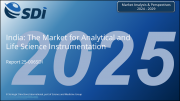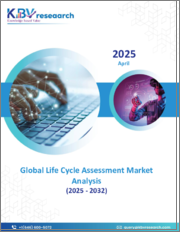
|
시장보고서
상품코드
1728003
전과정평가(LCA) 시장 규모, 점유율, 동향 분석 보고서 : 구성요소별, 종류별, 전개 방식별, 기업 규모별, 최종 용도별, 지역별, 부문별 예측(2025-2030년)Life Cycle Assessment Market Size, Share & Trends Analysis Report By Component (Software, Services), By Type (Cradle to Cradle, Cradle to Grave, Gate to Gate), By Deployment, By Enterprise Size, By End-use, By Region, And Segment Forecasts, 2025 - 2030 |
||||||
전과정평가(LCA) 시장 규모와 동향:
전 세계 전과정평가 시장 규모는 2024년 7억 6,520만 달러로 추정되며, 2025년부터 2030년까지 14.4%의 연평균 성장률을 보일 것으로 예상됩니다. 환경 지속가능성과 탄소발자국 감소에 대한 전 세계적인 관심이 높아지면서 전과정 평가(LCA) 시장의 성장을 촉진하고 있습니다. 정부, 기업, 소비자가 제품 및 서비스의 환경 영향에 대한 인식이 높아짐에 따라 원자재 채취부터 생산, 사용, 폐기에 이르는 전체 수명주기 동안 이러한 영향을 측정하고 관리할 수 있는 도구에 대한 수요가 증가하고 있습니다. 비효율적인 부분과 개선해야 할 부분을 파악할 수 있도록 합니다. 기후변화에 대한 우려와 국제적인 기후변화 협약에 힘입어 지속가능성 보고가 활성화되면서 환경 관행의 투명성과 책임성을 보장하기 위해 모든 산업 분야의 기업들이 LCA 툴을 더욱 많이 채택하고 있습니다.
전 세계적으로 엄격한 환경 규제와 컴플라이언스 요구사항이 전과정평가 시장의 채택을 촉진하고 있습니다. 유럽, 북미, 아시아 일부 지역에서는 정부가 환경 영향 공개를 의무화하고 배출량, 자원 소비량, 폐기물 발생량을 엄격하게 제한하고 있습니다. 기업들은 규제 요건을 충족하고, 벌칙을 피하고, 영업 허가를 유지하기 위해 LCA 툴을 점점 더 많이 채택하고 있습니다. 이러한 규제 압력은 제조업, 에너지, 화학, 소비재 등 다양한 분야에서 LCA 시장의 성장을 촉진하고 있습니다.
또한, 순환 경제 모델로의 전환도 전과정평가 시장의 중요한 촉진요인 중 하나입니다. 정부와 산업계는 자원 효율성, 재활용, 지속가능한 제품 설계를 우선시하는 순환 경제 원칙을 점점 더 많이 받아들이고 있습니다. 전과정평가는 자재 흐름, 제품 수명 종료 시나리오, 다양한 재활용 및 재사용 전략의 환경적 영향에 대한 데이터 기반 인사이트를 제공함으로써 순환 경제 이니셔티브를 지원하는 데 중요한 역할을 하고 있습니다. 순환 관행을 구현하려는 기업들은 제품 설계, 공급망 관리, 폐기물 감소를 위한 가장 지속가능한 옵션을 식별하기 위해 LCA에 의존하고 있으며, 이는 이러한 도구에 대한 수요를 촉진하고 있습니다. 유럽 환경청이 발표한 기사에 따르면, 유럽은 2023년 11.8%의 재활용률을 달성하여 세계 다른 지역에 비해 높은 재활용 재료 사용 비율을 달성할 것으로 예상됩니다. 순환형 경제로의 전환을 추진하는 것은 중요한 정책 우선순위로 부상하고 있습니다.
또한, 녹색건축 인증 및 지속가능한 건축에 대한 관심이 높아지는 것도 특히 건설 분야에서의 LCA(Life Cycle Assessment) 시장을 촉진하는 요인으로 작용하고 있습니다. BREEAM, WELL 등의 인증은 건축자재나 설계의 환경성능을 평가하기 위해 LCA에 기반한 평가를 요구하거나 권장하는 경우가 많습니다. 건축가, 엔지니어, 건설사들은 환경에 가장 적은 영향을 미치는 재료를 선택하고 지속가능성 벤치마크를 충족하는 건물을 설계하기 위해 LCA 툴을 점점 더 많이 활용하고 있습니다. 이러한 추세는 북미, 유럽, 아시아 일부 지역 등 에너지 및 환경 관련 건축 기준이 엄격한 지역에서 특히 두드러지며, 건설 및 부동산 업계에서 LCA 시장이 확대되고 있습니다.
목차
제1장 분석 방법·범위
제2장 주요 요약
제3장 전과정평가 시장 : 변수, 동향, 범위
- 시장 연관 전망
- 시장 역학
- 시장 성장 촉진요인 분석
- 시장 성장 억제요인 분석
- 업계 과제
- 전과정평가 시장 : 분석 툴
- 업계 분석 : Porter's Five Forces 분석
- PESTEL 분석
제4장 전과정평가 시장 : 구성요소별 전망
- 전과정평가 시장 : 분석과 시장 점유율, 구성요소별(2024년·2030년)
- 소프트웨어
- 서비스
제5장 전과정평가 시장 : 종류별 전망
- 전과정평가 시장 : 분석과 시장 점유율, 종류별(2024년·2030년)
- 요람에서 요람까지
- 요람에서 무덤까지
- 요람에서 게이트까지
- 게이트에서 게이트까지
제6장 전과정평가 시장 : 전개 방식별 전망
- 전과정평가 시장 : 분석과 시장 점유율, 전개 방식별(2024년·2030년)
- 온프레미스
- 클라우드
제7장 전과정평가 시장 : 기업 규모별 전망
- 전과정평가 시장 : 분석과 시장 점유율, 기업 규모별(2024년·2030년)
- 대기업
- 중소기업
제8장 전과정평가 시장 : 최종 용도별 전망
- 전과정평가 시장 : 분석과 시장 점유율, 최종 용도별(2024년·2030년)
- 건설업
- 에너지
- 교통기관
- 제조업
- 농업
- IT·통신
- 소비재
- 기타
제9장 전과정평가 시장 : 지역별 추정·동향 분석
- 전과정평가 시장 점유율 : 지역별(2024년·2030년)
- 북미
- 미국
- 캐나다
- 멕시코
- 유럽
- 영국
- 독일
- 프랑스
- 아시아태평양
- 중국
- 인도
- 일본
- 호주
- 한국
- 라틴아메리카
- 브라질
- 중동 및 아프리카
- 아랍에미리트
- 사우디아라비아
- 남아프리카공화국
제10장 경쟁 구도
- 기업 분류
- 기업의 시장 포지셔닝
- 기업별 시장 점유율 분석(2024년)
- 기업 히트맵 분석
- 기업 개요/상장 기업
- TUV Rheinland
- Dassault Systemes
- SCS Global Services
- Sphera
- SimaPro
- Ecochain Technologies
- Hedgehog
- Valpak
- Anthesis Group Ltd.
- RINA SpA
- Makersite
- One Click LCA
- iPoint-systems gmbh
- Minviro Ltd
- WAP Sustainability, LLC
Life Cycle Assessment Market Size & Trends:
The global life cycle assessment market size was estimated at USD 765.2 million in 2024 and is projected to grow at a CAGR of 14.4% from 2025 to 2030. The growing global emphasis on environmental sustainability and carbon footprint reduction is driving the life cycle assessment (LCA) market growth. As governments, corporations, and consumers become increasingly aware of the environmental impact of products and services, there is a rising demand for tools that can measure and manage these effects across the entire life cycle from raw material extraction to production, use, and disposal. LCA provides a comprehensive framework for quantifying environmental impacts, enabling organizations to identify inefficiencies and areas for improvement. The push for sustainability reporting, driven by climate change concerns and international climate agreements, is further encouraging companies across industries to adopt LCA tools to ensure transparency and accountability in their environmental practices.
The stringent environmental regulations and compliance requirements worldwide are driving the adoption of the life cycle assessment market. Governments in regions like Europe, North America, and parts of Asia are mandating environmental impact disclosures and setting strict limits on emissions, resource consumption, and waste generation. Businesses are increasingly adopting LCA tools to meet regulatory demands, avoid penalties, and maintain their licenses to operate. This regulatory pressure is fostering the growth of the LCA market across various sectors, including manufacturing, energy, chemicals, and consumer goods.
Additionally, the shift towards circular economy models is another important driver of the life cycle assessment market. Governments and industries are increasingly embracing circular economic principles, which prioritize resource efficiency, recycling, and sustainable product design. Life cycle assessment plays a crucial role in supporting circular economy initiatives by providing data-driven insights into material flows, product end-of-life scenarios, and the environmental impact of different recycling or reuse strategies. Companies looking to implement circular practices rely on LCA to identify the most sustainable options for product design, supply chain management, and waste reduction, thereby driving demand for these tools. According to an article published by the European Environment Agency, Europe achieved a circular rate of 11.8% in 2023, indicating that it uses a greater share of recycled materials compared to other regions globally. Advancing the shift toward a circular economy has emerged as a key policy priority.
Furthermore, the growing emphasis on green building certifications and sustainable architecture is another driver of the life cycle assessment (LCA) market, particularly in the construction sector. Certifications such as LEED (Leadership in Energy and Environmental Design), BREEAM, and WELL often require or recommend LCA-based assessments to evaluate the environmental performance of building materials and designs. Architects, engineers, and construction firms are increasingly using LCA tools to select materials with the least environmental impact and to design buildings that meet sustainability benchmarks. This trend is especially strong in regions with stringent energy and environmental building codes, such as Europe, North America, and parts of Asia, thereby expanding the LCA market within the construction and real estate industries.
Global Life Cycle Assessment Market Report Segmentation
This report forecasts revenue growth at global, regional, and at country levels and offers a qualitative and quantitative analysis of the market trends for each of the segment and sub-segments from 2018 to 2030. For this study, Grand View Research has segmented the global life cycle assessment market based on component, type, deployment, enterprise size, end-use, and region:
- Component Outlook (Revenue, USD Million, 2018 - 2030)
- Software
- Services
- Type Outlook (Revenue, USD Million, 2018 - 2030)
- Cradle to Cradle
- Cradle to Grave
- Cradle to Gate
- Gate to Gate
- Deployment Outlook (Revenue, USD Million, 2018 - 2030)
- On-premises
- Cloud
- Enterprise Size Outlook (Revenue, USD Million, 2018 - 2030)
- Large Enterprises
- SMEs
- End-use Outlook (Revenue, USD Million, 2018 - 2030)
- Construction
- Energy
- Transportation
- Manufacturing
- Agriculture
- IT & Telecommunication
- Consumer Goods
- Others
- Regional Outlook (Revenue, USD Million, 2018 - 2030)
- North America
- U.S.
- Canada
- Mexico
- Europe
- UK
- Germany
- France
- Asia Pacific
- China
- India
- Japan
- Australia
- South Korea
- Latin America
- Brazil
- Middle East & Africa
- UAE
- Saudi Arabia
- South Africa
Table of Contents
Chapter 1. Methodology and Scope
- 1.1. Market Segmentation and Scope
- 1.2. Research Methodology
- 1.2.1. Information Procurement
- 1.3. Information or Data Analysis
- 1.4. Methodology
- 1.5. Research Scope and Assumptions
- 1.6. Market Formulation & Validation
- 1.7. Country Based Segment Share Calculation
- 1.8. List of Data Sources
Chapter 2. Executive Summary
- 2.1. Market Outlook
- 2.2. Segment Outlook
- 2.3. Competitive Insights
Chapter 3. Life Cycle Assessment Market Variables, Trends, & Scope
- 3.1. Market Lineage Outlook
- 3.2. Market Dynamics
- 3.2.1. Market Driver Analysis
- 3.2.2. Market Restraint Analysis
- 3.2.3. Industry Challenge
- 3.3. Life Cycle Assessment Market Analysis Tools
- 3.3.1. Industry Analysis - Porter's
- 3.3.1.1. Bargaining power of the suppliers
- 3.3.1.2. Bargaining power of the buyers
- 3.3.1.3. Threats of substitution
- 3.3.1.4. Threats from new entrants
- 3.3.1.5. Competitive rivalry
- 3.3.2. PESTEL Analysis
- 3.3.2.1. Political landscape
- 3.3.2.2. Economic landscape
- 3.3.2.3. Social landscape
- 3.3.2.4. Technological landscape
- 3.3.2.5. Environmental landscape
- 3.3.2.6. Legal landscape
- 3.3.1. Industry Analysis - Porter's
Chapter 4. Life Cycle Assessment Market Component Outlook
- 4.1. Life Cycle Assessment Market, By Component Analysis & Market Share, 2024 & 2030
- 4.2. Software
- 4.2.1. Software market estimates and forecasts, 2018 - 2030 (USD Million)
- 4.3. Services
- 4.3.1. Services market estimates and forecasts, 2018 - 2030 (USD Million)
Chapter 5. Life Cycle Assessment Market Type Outlook
- 5.1. Life Cycle Assessment Market, By Type Analysis & Market Share, 2024 & 2030
- 5.2. Cradle to Cradle
- 5.2.1. Cradle to cradle market estimates and forecasts, 2018 - 2030 (USD Million)
- 5.3. Cradle to Grave
- 5.3.1. Cradle to grave market estimates and forecasts, 2018 - 2030 (USD Million)
- 5.4. Cradle to Gate
- 5.4.1. Cradle to gate market estimates and forecasts, 2018 - 2030 (USD Million)
- 5.5. Gate to Gate
- 5.5.1. Gate to gate market estimates and forecasts, 2018 - 2030 (USD Million)
Chapter 6. Life Cycle Assessment Market Deployment Outlook
- 6.1. Life Cycle Assessment Market, By Deployment Analysis & Market Share, 2024 & 2030
- 6.2. On-premises
- 6.2.1. On-premises market estimates and forecasts, 2018 - 2030 (USD Million)
- 6.3. Cloud
- 6.3.1. Cloud market estimates and forecasts, 2018 - 2030 (USD Million)
Chapter 7. Life Cycle Assessment Market Enterprise Size Outlook
- 7.1. Life Cycle Assessment Market, By Enterprise Size Analysis & Market Share, 2024 & 2030
- 7.2. Large Enterprises
- 7.2.1. Large Enterprises market estimates and forecasts, 2018 - 2030 (USD Million)
- 7.3. SMEs
- 7.3.1. SMEs market estimates and forecasts, 2018 - 2030 (USD Million)
Chapter 8. Life Cycle Assessment Market End Use Outlook
- 8.1. Life Cycle Assessment Market, By End Use Analysis & Market Share, 2024 & 2030
- 8.2. Construction
- 8.2.1. Construction market estimates and forecasts, 2018 - 2030 (USD Million)
- 8.3. Energy
- 8.3.1. Energy market estimates and forecasts, 2018 - 2030 (USD Million)
- 8.4. Transportation
- 8.4.1. Transportation market estimates and forecasts, 2018 - 2030 (USD Million)
- 8.5. Manufacturing
- 8.5.1. Manufacturing market estimates and forecasts, 2018 - 2030 (USD Million)
- 8.6. Agriculture
- 8.6.1. Agriculture market estimates and forecasts, 2018 - 2030 (USD Million)
- 8.7. IT & Telecommunication
- 8.7.1. IT & Telecommunication market estimates and forecasts, 2018 - 2030 (USD Million)
- 8.8. Consumer Goods
- 8.8.1. Consumer Goods market estimates and forecasts, 2018 - 2030 (USD Million)
- 8.9. Others
- 8.9.1. Others market estimates and forecasts, 2018 - 2030 (USD Million)
Chapter 9. Life Cycle Assessment Market: Regional Estimates & Trend Analysis
- 9.1. Life Cycle Assessment Market Share, By Region, 2024 & 2030 (USD Million)
- 9.2. North America
- 9.2.1. North America Life Cycle Assessment Market Estimates and Forecasts, 2018 - 2030 (USD Million)
- 9.2.2. U.S.
- 9.2.2.1. U.S. Life Cycle Assessment Market Estimates and Forecasts, 2018 - 2030 (USD Million)
- 9.2.3. Canada
- 9.2.3.1. Canada Life Cycle Assessment Market Estimates and Forecasts, 2018 - 2030 (USD Million)
- 9.2.4. Mexico
- 9.2.4.1. Mexico Life Cycle Assessment Market Estimates and Forecasts, 2018 - 2030 (USD Million)
- 9.3. Europe
- 9.3.1. Europe Life Cycle Assessment Market Estimates and Forecasts, 2018 - 2030 (USD Million)
- 9.3.2. UK
- 9.3.2.1. UK Life Cycle Assessment Market Estimates and Forecasts, 2018 - 2030 (USD Million)
- 9.3.3. Germany
- 9.3.3.1. Germany Life Cycle Assessment Market Estimates and Forecasts, 2018 - 2030 (USD Million)
- 9.3.4. France
- 9.3.4.1. France Life Cycle Assessment Market Estimates and Forecasts, 2018 - 2030 (USD Million)
- 9.4. Asia Pacific
- 9.4.1. Asia Pacific Life Cycle Assessment Market Estimates and Forecasts, 2018 - 2030 (USD Million)
- 9.4.2. China
- 9.4.2.1. China Life Cycle Assessment Market Estimates and Forecasts, 2018 - 2030 (USD Million)
- 9.4.3. India
- 9.4.3.1. India Life Cycle Assessment Market Estimates and Forecasts, 2018 - 2030 (USD Million)
- 9.4.4. Japan
- 9.4.4.1. Japan Life Cycle Assessment Market Estimates and Forecasts, 2018 - 2030 (USD Million)
- 9.4.5. Australia
- 9.4.5.1. Australia Life Cycle Assessment Market Estimates and Forecasts, 2018 - 2030 (USD Million)
- 9.4.6. South Korea
- 9.4.6.1. South Korea Life Cycle Assessment Market Estimates and Forecasts, 2018 - 2030 (USD Million)
- 9.5. Latin America
- 9.5.1. Latin America Life Cycle Assessment Market Estimates and Forecasts, 2018 - 2030 (USD Million)
- 9.5.2. Brazil
- 9.5.2.1. Brazil Life Cycle Assessment Market Estimates and Forecasts, 2018 - 2030 (USD Million)
- 9.6. Middle East and Africa
- 9.6.1. Middle East and Africa Life Cycle Assessment Market Estimates and Forecasts, 2018 - 2030 (USD Million)
- 9.6.2. UAE
- 9.6.2.1. UAE Life Cycle Assessment Market Estimates and Forecasts, 2018 - 2030 (USD Million)
- 9.6.3. Saudi Arabia
- 9.6.3.1. Saudi Arabia Life Cycle Assessment Market Estimates and Forecasts, 2018 - 2030 (USD Million)
- 9.6.4. South Africa
- 9.6.4.1. South Africa Life Cycle Assessment Market Estimates and Forecasts, 2018 - 2030 (USD Million)
Chapter 10. Competitive Landscape
- 10.1. Company Categorization
- 10.2. Company Market Positioning
- 10.3. Company Market Share Analysis, 2024
- 10.4. Company Heat Map Analysis
- 10.5. Company Profiles/Listing
- 10.5.1. TUV Rheinland
- 10.5.1.1. Participant's Overview
- 10.5.1.2. Financial Performance
- 10.5.1.3. Product Benchmarking
- 10.5.1.4. Strategic Initiatives
- 10.5.2. Dassault Systemes
- 10.5.2.1. Participant's Overview
- 10.5.2.2. Financial Performance
- 10.5.2.3. Product Benchmarking
- 10.5.2.4. Strategic Initiatives
- 10.5.3. SCS Global Services
- 10.5.3.1. Participant's Overview
- 10.5.3.2. Financial Performance
- 10.5.3.3. Product Benchmarking
- 10.5.3.4. Strategic Initiatives
- 10.5.4. Sphera
- 10.5.4.1. Participant's Overview
- 10.5.4.2. Financial Performance
- 10.5.4.3. Product Benchmarking
- 10.5.4.4. Strategic Initiatives
- 10.5.5. SimaPro
- 10.5.5.1. Participant's Overview
- 10.5.5.2. Financial Performance
- 10.5.5.3. Product Benchmarking
- 10.5.5.4. Strategic Initiatives
- 10.5.6. Ecochain Technologies
- 10.5.6.1. Participant's Overview
- 10.5.6.2. Financial Performance
- 10.5.6.3. Product Benchmarking
- 10.5.6.4. Strategic Initiatives
- 10.5.7. Hedgehog
- 10.5.7.1. Participant's Overview
- 10.5.7.2. Financial Performance
- 10.5.7.3. Product Benchmarking
- 10.5.7.4. Strategic Initiatives
- 10.5.8. Valpak
- 10.5.8.1. Participant's Overview
- 10.5.8.2. Financial Performance
- 10.5.8.3. Product Benchmarking
- 10.5.8.4. Strategic Initiatives
- 10.5.9. Anthesis Group Ltd.
- 10.5.9.1. Participant's Overview
- 10.5.9.2. Financial Performance
- 10.5.9.3. Product Benchmarking
- 10.5.9.4. Strategic Initiatives
- 10.5.10. RINA S.p.A.
- 10.5.10.1. Participant's Overview
- 10.5.10.2. Financial Performance
- 10.5.10.3. Product Benchmarking
- 10.5.10.4. Strategic Initiatives
- 10.5.11. Makersite
- 10.5.11.1. Participant's Overview
- 10.5.11.2. Financial Performance
- 10.5.11.3. Product Benchmarking
- 10.5.11.4. Strategic Initiatives
- 10.5.12. One Click LCA
- 10.5.12.1. Participant's Overview
- 10.5.12.2. Financial Performance
- 10.5.12.3. Product Benchmarking
- 10.5.12.4. Strategic Initiatives
- 10.5.13. iPoint-systems gmbh
- 10.5.13.1. Participant's Overview
- 10.5.13.2. Financial Performance
- 10.5.13.3. Product Benchmarking
- 10.5.13.4. Strategic Initiatives
- 10.5.14. Minviro Ltd
- 10.5.14.1. Participant's Overview
- 10.5.14.2. Financial Performance
- 10.5.14.3. Product Benchmarking
- 10.5.14.4. Strategic Initiatives
- 10.5.15. WAP Sustainability, LLC
- 10.5.15.1. Participant's Overview
- 10.5.15.2. Financial Performance
- 10.5.15.3. Product Benchmarking
- 10.5.15.4. Strategic Initiatives
- 10.5.1. TUV Rheinland
(주말 및 공휴일 제외)


















